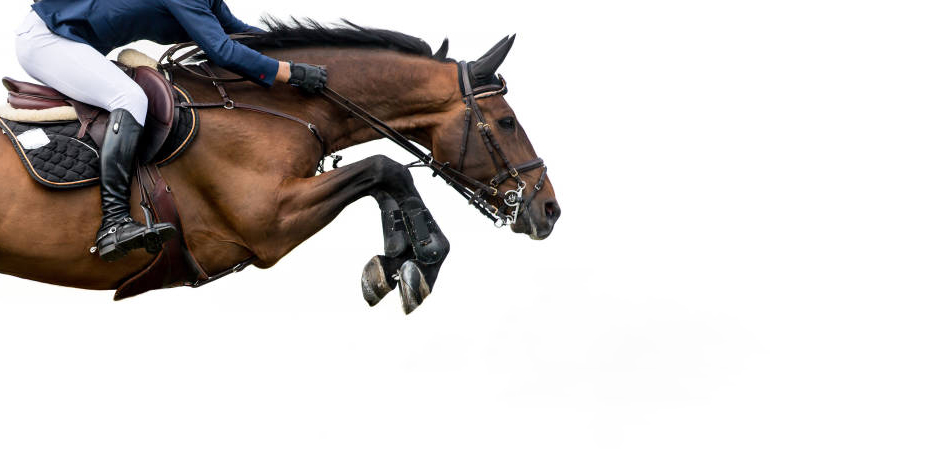
5 Facts about equine physiotherapy

Hallie Hill APAM, Katrinka Geelen APAM, Dr Lesley Goff APAM MACP, Lynne Harrison APAM MACP and Madeline Buck APAM of the APA Animal national group present five discussion points about common factors affecting the health and performance of equine athletes and the role of physiotherapists in treating and managing these patients and their riders.
1. Tendinopathy is common in competition horses
Tendon injury is one of the most common musculoskeletal injuries in competition horses of all disciplines (Thorpe et al 2020).
The superficial digital flexor tendon, which accounts for the majority of these injuries, is functionally and clinically equivalent to the human Achilles tendon (Patterson-Kane & Rich 2014) and provides a good equine model for comparing naturally occurring tendon disease across the two species (Smith & McIlwraith 2021).
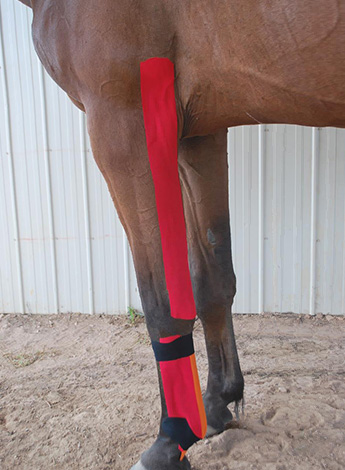
The continuum model of tendon pathology describes tenocyte activation as the primary aetiological event (Cook & Purdam 2009), while inflammation is believed to be a contributing factor in the onset and progression of tendon disease (Smith & McIlwraith 2021).
Clinical diagnosis is important because imaging correlates poorly with tendon pain and function (Cardoso et al 2019).
A gradual loading program is the most evidence-based approach for managing tendinopathy (Cardoso et al 2019).
Complete rest is unhelpful—it has been shown to decrease the mechanical properties of tendons and to reduce muscle power (Cook 2018).
There is limited evidence to support regenerative therapies (Kampa et al 2011) or passive treatments such as icing and cooling, stretching or deep friction massage (Smith & McIlwraith 2021, Cook 2018, Skojong et al 2012).
However, laser and pulsed ultrasound have been shown to provide short-term pain relief and improve function (Dingemanseet al 2014).
2. Ideal attributes and common vulnerabilities cut across equine disciplines
The equine athlete may be an all-rounder or committed to a specific discipline.
As with all sports, there are various levels of athleticism.
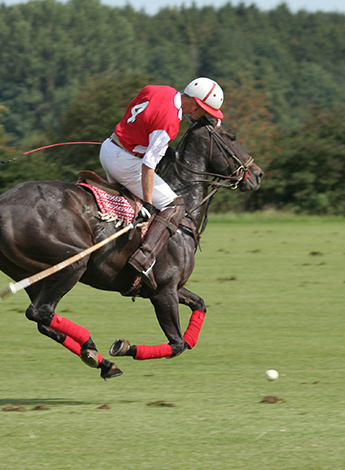
From a physiotherapy and veterinary perspective, the ‘ideal’ equine athlete is said to exhibit long gaskins, short and strong metatarsals, shoulders and pasterns angled at 45 degrees, a croup that is neither too steep nor too flat and a well-coupled back that is neither too long nor too short (Ross & Dyson 2011).
These traits generally allow for better dispersion of concussive forces, a larger area for muscular attachment and therefore improved leverage, and greater forelimb and hind limb reach and drive.
The smoother, more energy-efficient locomotion this leads to is highly desirable for athletes required to gallop, such as racehorses, eventers, polo horses or sporting horses (McIlwraith et al 2003).
Across most disciplines (including dressage, showjumping, eventing and racing), common areas of vulnerability are the spine, the pelvis and sacroiliac joint, the shoulder, the carpus, fetlocks, hocks and stifles (McIlwraith et al 2003).
Different joints are variously affected by degrees of load and range.
In order to optimise both performance and welfare, physiotherapists must be able to assess a horse’s capacity to adapt to exercise demands.
3. The rider affects the horse
Equestrian sport is unique because there are two individuals contributing to performance who need to be in absolute harmony to execute manoeuvres.
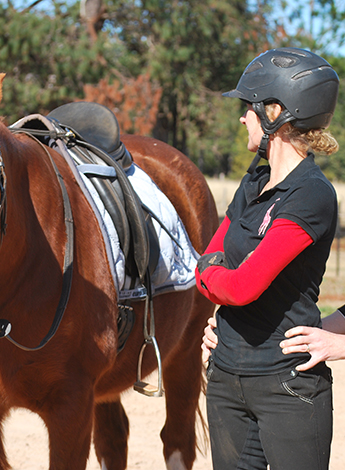
Evidence suggests that the rider can affect the performance of the horse, particularly in relation to the equine thoracolumbar region (MacKechnie-Guire et al 2020, Gunst
et al 2019).
Animal physiotherapists are qualified to manage both components of the horse–rider team and they use their training in equine physiotherapy as well as their musculoskeletal physiotherapy skills.
Tactile communication between the rider and the horse can be altered by rider injury or dysfunction (Munz et al 2014).
Areas of the rider in direct contact with the horse and saddle are the pelvic floor muscle region, the ischial tuberosity and pubic rami bones, the medial surfaces of thighs and lower limbs, the feet and the hands via the reins and bit.
Other parts of the rider’s body, such as the lumbosacral spine, the hips, the thoracic region and the neck (through hand positioning), will affect the areas directly contacting the horse (Goff 2022).
Ultimately, the equestrian athlete should be assessed and managed as a single functional unit, using outcome measures pertaining to equine sport.
4. Back pain is a common contributor to poor equine performance
Back pain is a common contributor to poor performance in the horse (Jeffcott 1980, Haussler 2015) and it can be incredibly challenging to definitively diagnose the cause of symptoms due to the complexity of the structures involved (Zimmermann et al 2011).

Overriding dorsal spinous processes is one of the most frequently diagnosed conditions.
It is characterised by abnormal bony contact and narrowed interspinous spaces that induce local pain, soft tissue inflammation, bone remodelling and bone sclerosis and decrease back mobility (Haussler 2015).
The prevalence and severity of overriding dorsal spinous processes is highest in the thoracolumbar spine, often affecting multiple vertebral levels (Haussler 2015).
Many horses undergo spinal surgery to resolve pain when they have failed to respond medically or when graded as severe (Garcia-Lopez 2018).
Multiple studies have reported atrophy of the multifidus muscle, which remains dysfunctional and atrophied if not rehabilitated, even after the resolution of pain.
This can lead to a recurrence of back pain (Stubbs et al 2010).
Physiotherapy for back pain initially focuses on strengthening the multifidus.
Dynamic mobility exercises have been proven to reactivate and strengthen this muscle, reducing the risk of persistent back pain and poor performance.
5. Ill-fitting saddles affect thoracolumbar kinematics
The saddle is important—it directly affects rider and horse comfort and allows communication between the two athletes (McGuire and Hillary 2022).
Ill-fitting tack can cause ulcerations, bruising and a reduction in limb range (Greve & Dyson 2013) and this in turn can affect performance and health.
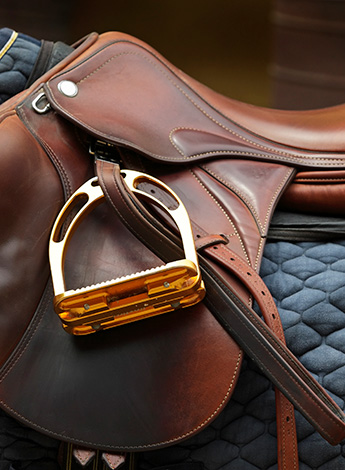
According to Clayton & MacKechnie-Guire (2022), many issues can arise with saddles, including asymmetrical flocking, incorrect flocking, problems with tree points, asymmetrical trees, the wrong tree for a horse’s anatomy and broken trees.
Saddle fit is difficult to evaluate in a static horse and regular professional advice is needed.
A recent study by MacKechnie-Guire et al (2019) found that saddles fitted too wide or too narrow resulted in altered pressure distribution and changes in thoracolumbar spinal kinematics.
Optimal fit of the tree is paramount in thoracolumbar kinematics and ensures the best possible weight distribution of the rider, which has been found to have two times more force in trot and 2.5 times more force in canter (MacKechnie-Guire
et al 2019).
According to Greve & Dyson (2014), horses with ill-fitting saddles showed a reduced cranial phase of the step in canter and saddle slip.
This is associated with rider back pain, equine back pain and thoracolumbar asymmetries.
- References
-
McIlwraith, C.W. et. al. (2003). ‘Conformation and musculoskeletal problems in the racehorse.’ Clinical Techniques in Equine Practice, 2(4), pp. 339-347.
Ross, M.W. & Dyson, S.J. (2011) Diagnosis and management of lameness in the horse. 2nd Edition. Missouri: Elsevier Saunders.
Thorpe, C.T., Clegg, P.D., and Birch, H.L. (2020) ‘A review of tendon injury: Why is the equine superficial digital flexor tendon most at risk?’ Equine Veterinary Journal, 42 (2), pp. 174-180.
Patterson-Kane, J.C., and Rich, T. (2014) ‘Achilles Tendon Injuries in Elite Athletes: Lessons in Pathophysiology from Their Equine Counterparts’, ILAR Journal, 55 (1), pp. 86 – 99.
Smith, R.K.W. and McIlwraith, C.W. (2021) ‘“One Health” in tendinopathy research: Current concepts’, Journal of Orthopaedic Research, 39, pp.1596–1602.
Cook, J.L., and Purdam, C.R. (2009) ‘Is tendon pathology a continuum? A pathology model to explain the clinical presentation of load-induced tendinopathy’, British Journal of Sports Medicine, 43, pp. 409–416.
Cardoso, T.B., Pizzari, T., Kinsella, R. Hope, D. and Cook, J. (2019) ‘Current trends in tendinopathy management’, Best Practice and Research Clinical Rheumatology, 33, pp. 122 -140.
Cook, J.L. (2018) ‘Ten treatments to avoid in patients with lower limb tendon pain’, British Journal of Sports Medicine, 52(14).
Skojong, C.C., Meininger, A.K., and Ho, S.S. (2012) ‘Tendinopathy treatment: where is the evidence? Clinical Sports Medicine, 31(2), pp. 329 – 350.
Kampa, R., Connell, D., Cardone, D., and Dennis, A. (2011) ‘Limited evidence supports the effectiveness of autologous blood injections for chronic tendinopathies’, Journal of Bone and Joint Surgery, 93(16), pp. 1545.
Dingemanse, R., Randsdorp, M., Koes, B.W., and Huisstede, B.M. (2014) ‘Evidence for the effectiveness of electrophysical modalities for treatment of medial and lateral epicondylitis: a systematic review’, British Journal of Sports Medicine, 48(12), pp. 957 - 965.
MacKechnie-Guire R, MacKechnie-Guire E, Fairfax V, et al. The effect that induced rider asymmetry has on equine locomotion and the range of motion of the thoracolumbar spine when ridden in rising trot. JEVS 2020; 88: 1029462.
Gunst S, Dittman M, Arpagaus S, et al. Influence of functional rider and horse asymmetries on saddle force distribution in stance and during sitting trot. JEVS 2019; 78: 20-28
Munz A, Eckhadt F, Witte K. Horse-rider interaction in dressage riding. Hum Mov Science 2014; 33: 226-237
Goff, L. Managing the Rider. Vet Clin North Am Equine Pract. 2022; 38: 603-616
Garcia-Lopez, J. (2018), Neck, back, and pelvic pain in sport horses, Vet Clinic Equine, 34, 235-251
Haussler, K. (2015), Managing Back Pain, Chapter 22 in Robinson’s Current Therapy in Equine Medicine, 92-96
Jeffcott, L. (1980) Disorders of the thoracolumbar spine of the horse – a survey of 443 cases. Equine vet. J. 12, 197-210
Stubbs, N., Riggs, C., Hodges, P., Jeffcott, L., Hodgson, D., Clayton, H., & McGowan, C. (2010) Osseous spinal pathology and epaxial muscle ultrasonography in Thoroughbred racehorses, EVJ, 42 (Suppl.38) 654-661.
Zimmermann, M., Dyson, S., and Murray, R. (2011) Assessment of the dorsal spinous processes in the thoracolumbar region; comparison of radiological and nuclear scintigraphic evaluation. Vet. Radiol. Ultrasound, 52, 661–671
Clayton, H.M, and MacKechnie-Guire, R. (2022) Tack Fit and Use. Vet Clin Equine. https://doi.org/10.1016/j.cveq.2022.07.003
Greve L, Dyson SJ. (2013) An Investigation of the Relationship between Hindlimb Lameness and Saddle Slip. Equine Vet J 2
Greve, L. and Dyson, S. (2014) Saddle fit and management: An investigation of the association with equine thoracolumbar asymmetries, horse and rider health. Equine Veterinary Journal https://doi.org/10.1111/evj.12304
MacKechnie-Guire R, Weller R, Fisher M, et al (2017). Investigation Looking at the Repeatability of 20 Society of Master Saddlers Qualified Saddle Fitters’ Observations During Static Saddle Fit. J Equine Vet Sci (56, 1–5)
MacKechnie-Guire, R., MacKechnie-Guire, E., Fairfax, V., et al (2019) The Effect of Tree Width on Thoracolumbar and Limb Kinematics, Saddle Pressure Distribution, and Thoracolumbar Dimensions in Sports Horses in Trot and Canter. Animals, 9(10), 842.
© Copyright 2024 by Australian Physiotherapy Association. All rights reserved.





